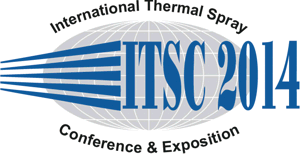
|
3871 |
|
Friday, May 23, 2014, Hall H2 11:20 AM Tribological Coatings |
|
Multiscale modeling of microstructural defects and influence on mechanical properties and wear resistance of thermal spray coatings |
|
Anssi Laukkanen / VTT, Finland Tommi Varis / VTT, Finland Tomi Suhonen/ VTT, Finland Jarkko Metsäjoki/ VTT, Finland Tom Andersson/ VTT, Finland Tarja Laitinen/ VTT, Finland T. Pinomaa*/ , |
|
Multiscale modeling method for thermal spray microstructures is developed using the VTT ProperTune methodology and applied for mechanical and wear behavior modeling of a Cr2O3 coating. The work is carried out following a process-structure-properties-performance (PSPP) type of an analysis emphasizing the couplings between microstructural morphologies, mechanical properties and wear performance of the coating. The multiscale analysis method permits evaluation of the defect structures responsible for the coating behavior and an assessment with respect to the underlying microstructurally dominating features is presented, the goal being material design and tailoring for optimal component specific material performance. A detail most crucial for performance of various thermal spray coatings is their defect structure, such as pores, cracks, splat boundary defects, their combinations and clusters at the scale of material microstructure. The applied multiscale modeling concept is able to include these defects, their morphologies and distributions fully in three-dimensional microstructures, enabling detailed assessment how the coating behaves in its indented application environment. Imaging based methods are utilized to study the coating in question, the numerical model being verified by comparing to experimental results with respect to measured and computationally evaluated mechanical properties. The significance of different defect types and their number densities with respect to component performance is discussed, and the measured defect distributions are subjected to a sensitivity analysis in order to further investigate and quantify their effect to the performance measures and failure micromechanisms of interest. |